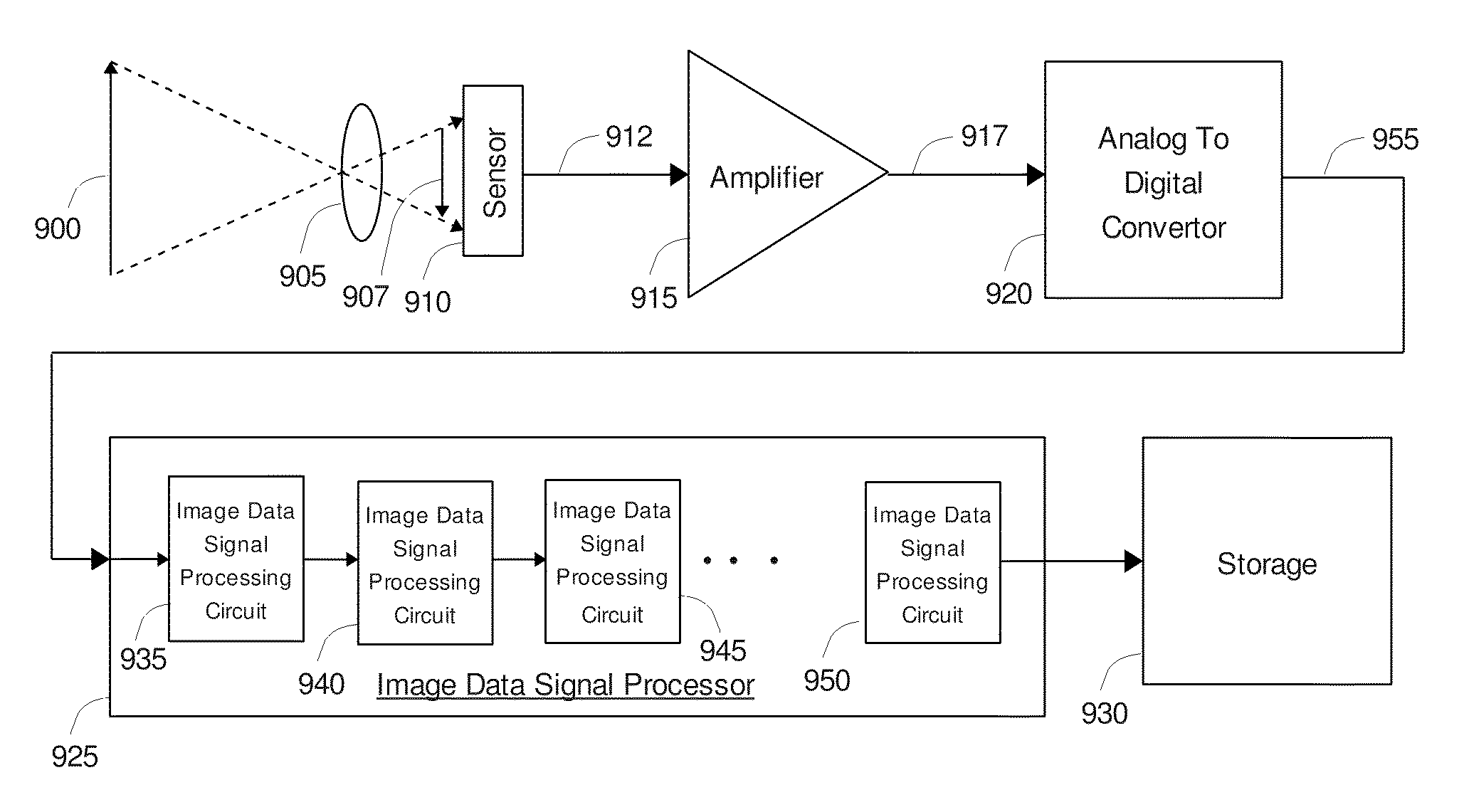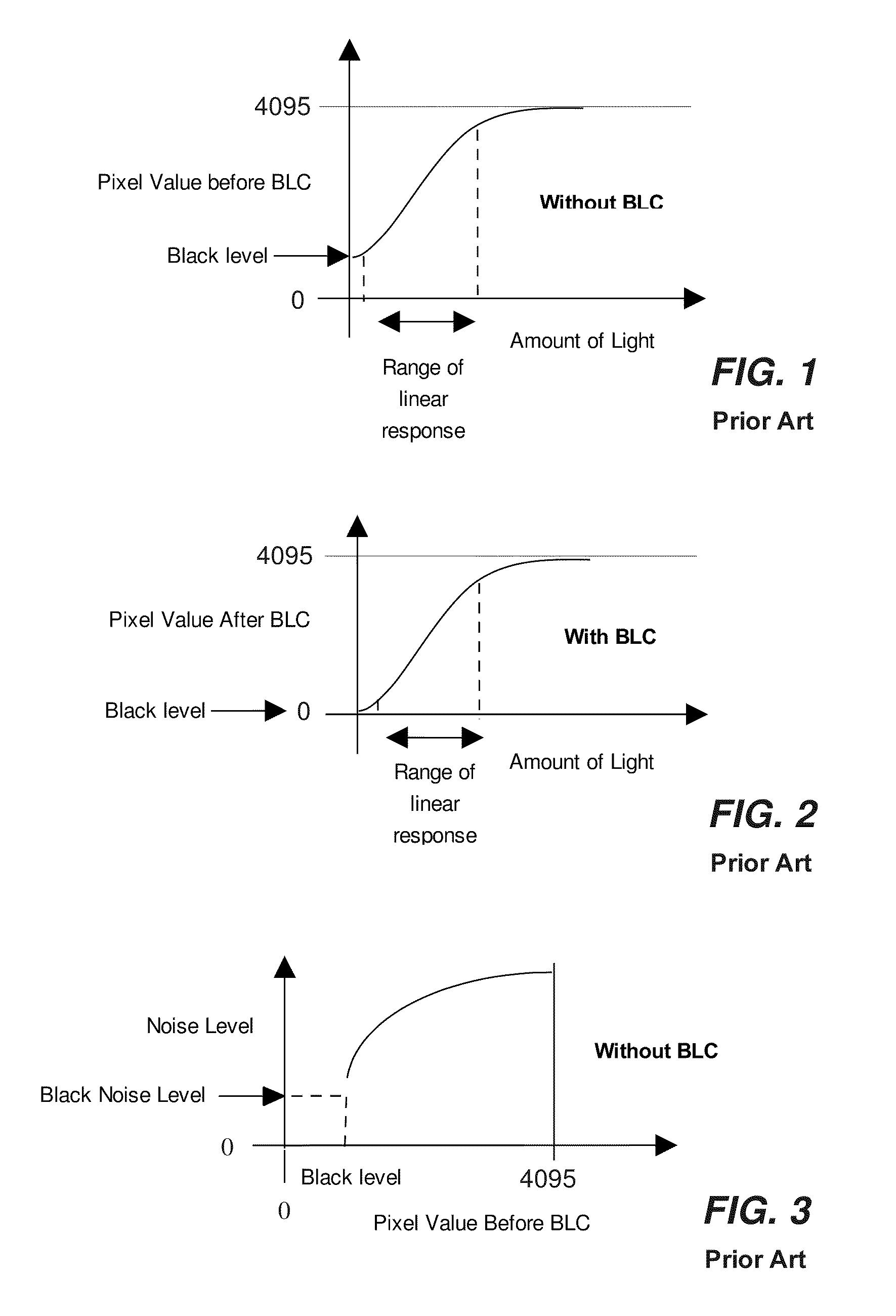Method and apparatus for post noise reduction black level correction
a black level correction and noise reduction technology, applied in the field of processing, can solve the problems of affecting the amount of noise in the captured image, reducing the noise level in the captured image signal, and almost always containing noise in the image produced by signals from optical image sensors, so as to achieve advanced noise reduction processing, reduce the effect of nonlinearity in the dark areas of the image, and reduce the noise level
- Summary
- Abstract
- Description
- Claims
- Application Information
AI Technical Summary
Benefits of technology
Problems solved by technology
Method used
Image
Examples
Embodiment Construction
[0038]The present invention will now be described more fully hereinafter with reference to the accompanying drawings, which form a part thereof, and which show, by way of illustration, a specific embodiment by which the invention may be practiced. The invention may, however, be embodied in many different forms and should not be construed as limited to the embodiment set forth herein; rather, this embodiment is provided so that this disclosure will be thorough and complete, and will fully convey the scope of the invention to those skilled in the art. Among other things, the present invention may be embodied as methods or devices. Accordingly, the present invention may take the form of an entirely hardware embodiment, and entirely software embodiment or an embodiment combining software and hardware aspects. The following detailed description is, therefore, not to be taken in a limiting sense.
[0039]Throughout the specification and claims, the following terms take the meanings explicitl...
PUM
 Login to View More
Login to View More Abstract
Description
Claims
Application Information
 Login to View More
Login to View More - R&D
- Intellectual Property
- Life Sciences
- Materials
- Tech Scout
- Unparalleled Data Quality
- Higher Quality Content
- 60% Fewer Hallucinations
Browse by: Latest US Patents, China's latest patents, Technical Efficacy Thesaurus, Application Domain, Technology Topic, Popular Technical Reports.
© 2025 PatSnap. All rights reserved.Legal|Privacy policy|Modern Slavery Act Transparency Statement|Sitemap|About US| Contact US: help@patsnap.com



